Nishiki Market and Takageta (High heels type geta) and high heels 1
Yoshie Doi
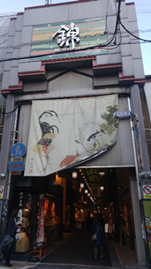 Photo taken on January 28, 2022 Nishiki Market with no crowds Photo taken on January 28, 2022 Nishiki Market with no crowds |
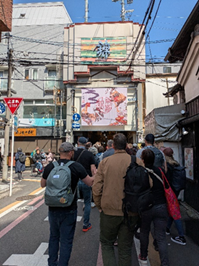 Photo taken on April 14,2025 Nishiki Market very crowds Photo taken on April 14,2025 Nishiki Market very crowds |
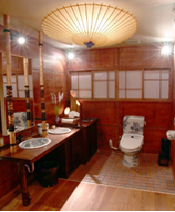 |
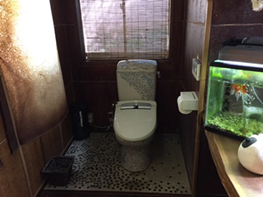 |
A tea room-style toilet
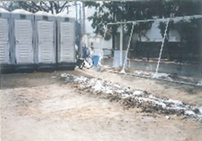 Lime spread and buried in an elementary school playground |
 Cresol liquid |
January 1995, Kobe City, survey of evacuees from the Great Hanshin-Awaji Earthquake
If we go to Nishiki Market on a Saturday evening, we will encounter many foreign tourists. Most of the customers are from overseas, so much so that we may wonder “Where are we?”. It is so hard to find any Japanese people.
There is a certain history that is always introduced when we go to Nishiki Market. One is that the cool well water became the market, and the other is that the alleys off the main road became toilets. It seems to be a common rule all over the world.
About 30 years ago, I attended a lecture by Dr. Roger-Henri Guerin, a professor at the University of Paris and a world authority on the history of toilets. It was very interesting to hear about the history of Paris that Japanese people don’t know about.
In medieval Paris, there was a time when urine and feces accumulated in chamber pots were dumped onto the street from second-floor windows, and thick-soled shoes were invented to protect against feces when walking on the road. These later evolved into high heels.
I heard that Napoleon built public toilets. I vividly remember his efforts in developing the city.
During the Edo period, it was common for Kyoto to relieve itself on the street or in gutters, but public toilets made from buckets were set up at every intersection in town, making the city a perfect place for culture and tourism, and it seems that the city has been striving to create a beautiful town since the Edo period.
In Japan, Taka geta wooden clogs were invented to protect toilets from feces, and they are said to have been used in the public toilets of Nishiki Market. Nishiki Market was originally called “Gusoku-koji” (Gusoku Alley) because there were many shops selling armor, but perhaps this was the fate of an alley off a main street. In 1054, by imperial decree of Emperor Go-Reizei, Gusoku-koji was renamed Nishiki-koji.
The remains of these shoes tell us that almost all of the medieval ladies who wore pointed high heels, both clogs and high heels that are now considered fashionable, suffered from bunions. In the process of the evolution of shoes from practical to fashionable, it seems that the designs became ones that were bad for the body.
The world’s oldest toilet was discovered around 2200 BC in the ruins of Ula, Sumer, where a seat made of stacked bricks and a drainage pipe covered with asphalt were found.
It actually began for humans to relieve themselves in designated places during the Jomon period. Between 4,000 and 6,000 years ago, remains of toilets that had been built by driving stakes into a river were discovered in Mikata Town, Fukui Prefecture, and these are said to be the remains of a toilet.
When I visited a medieval castle in Paris, I saw a real potty chair with a hole in it.
In Japan, chamber pots were introduced in the 6th century, and Heian aristocrats used lacquered stacked boxes for their needs. In one story, a man who was in love with a princess bought one, and sprinkled incense on it, further deepening his love for her.
It is said that Kyoto vegetables originated from the excrement of nobles, water, and the mellow climate and soil. During the Muromachi period, communal toilets were depicted in the Rakuchu Rakugaizu (map of the city in and around Kyoto).
In the Edo Period novel “Tōkaidō Chu Hizakurige,” which depicts Yaji and Kita walking through Sanjo on a pilgrimage to Shimizu, they come across a man carrying a pee bucket who is carrying a urinal and shouting, “Let’s take some radishes to pee,” as people barter their urine in an alleyway.
However, the two men who offered the radish had trouble urinating and got into a fight, so they added Kita-san’s urine and negotiated the price down to two radishes, but it was exchanged for three radishes, according to the story.
During the Kobe earthquake, I was made keenly aware of the importance of toilets when I surveyed evacuation shelters one week after the disaster.
(Continued in the next issue)
The end of document
Translated by Masami Otani
